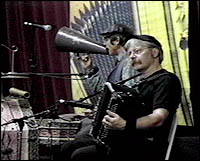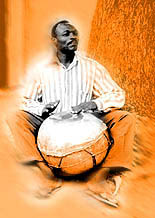
|
|
Bal-musette instruments
France
Lent by the Musée des musiques populaires de Montluçon, Musée de Tulle, France
Video Excerpt
|
|

|



Around 1880, dances and open-air cafés where people could
dance were at the height of their popularity in Paris. Many people from the Auvergne
region who had settled on the outskirts of the city gathered in cafés to dance to
the music of the musette, a small bagpipe. The expression bal-musette refers to
such dances. The musette was the most important instrument of the festivities and
recreated the atmosphere of the traditional festivals in Auvergne. Many Italian
immigrants moved into the same neighbourhoods, bringing with them their own
musical traditions. Over the years, the hurdy-gurdy and the bagpipes gave way
to the accordion, imported from Italy, which became the main instrument for a
new musical genre. The popular melodies, the music of village bands, Italian
songs, the people from the Auvergne region and the arrival of new instruments
from North America, including the banjo, helped the musette take shape and made
it the dance music preferred by Parisians. The instruments shown here include a
jazz drum set and its accessories, an accordion, bagpipes with three double
stocks and a banjo.

|







